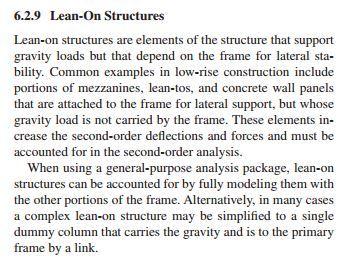deactivated
Structural
I am looking for a good design information regarding lean-to systems as shown on page 6 of pdf document in the link below.
According to this document the lean-to frame is designed using vertical loads only. Does that sound right? I'm a bit concerned since the largest loads according to my preliminary calcs are wind loads. Our client already has a lean-to system in place where the beams are 24' long but he wants to extend it even further up to 58' in clear span and re-use existing beams by splicing a new beam to it and reinforcing existing one if necessary after getting rid of existing exterior lean-to columns. I am looking for any information that could help me out in designing something like this and things to watch out for. One other question that I had is about analyzing lean-to frame. From the graphic in pdf document it looked like a cantilever frame but I would feel more comfortable by putting a moment connection where the lean-to beam meets existing building column since we have a huge existing column there. Thoughts?
According to this document the lean-to frame is designed using vertical loads only. Does that sound right? I'm a bit concerned since the largest loads according to my preliminary calcs are wind loads. Our client already has a lean-to system in place where the beams are 24' long but he wants to extend it even further up to 58' in clear span and re-use existing beams by splicing a new beam to it and reinforcing existing one if necessary after getting rid of existing exterior lean-to columns. I am looking for any information that could help me out in designing something like this and things to watch out for. One other question that I had is about analyzing lean-to frame. From the graphic in pdf document it looked like a cantilever frame but I would feel more comfortable by putting a moment connection where the lean-to beam meets existing building column since we have a huge existing column there. Thoughts?


